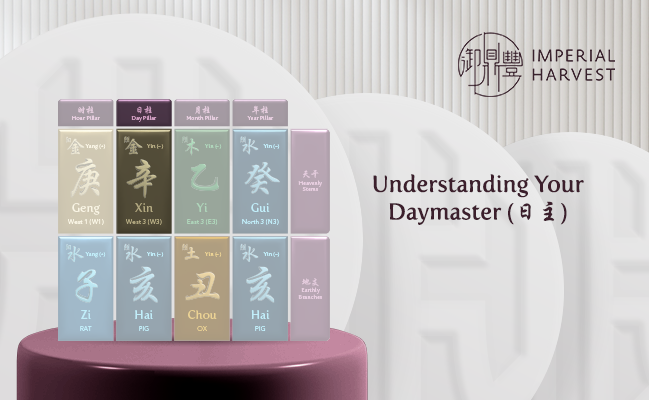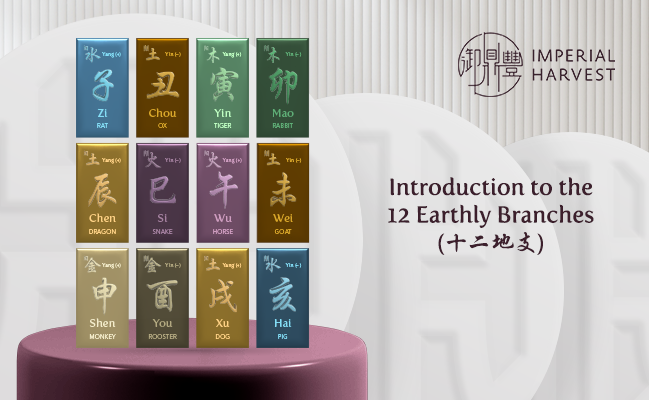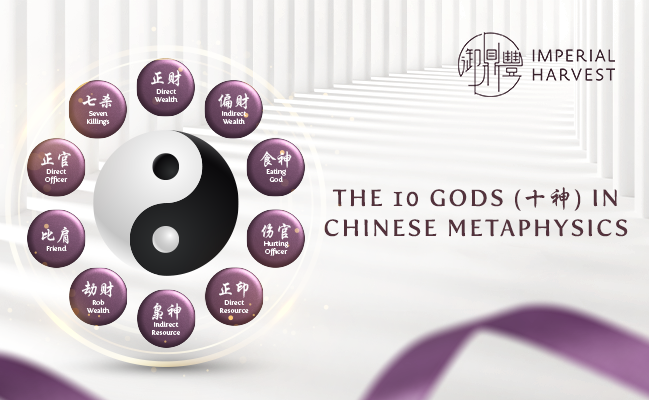Posted by Imperial Harvest on 06 January 2025
Estimated Reading Time: 5 mins
Bazi (八字), or the Four Pillars of Destiny, is a multidisciplinary study in Imperial Feng Shui. It encompasses a well-developed set of metaphysical principles based on planetary influences, the duality of Yin and Yang, and the Five Elements.
What is a Bazi Reading?
Bazi is an intricate discipline within Imperial Feng Shui. It is a traditional Chinese metaphysical system that analyses an individual’s birth data—specifically the year, month, day, and hour of birth.
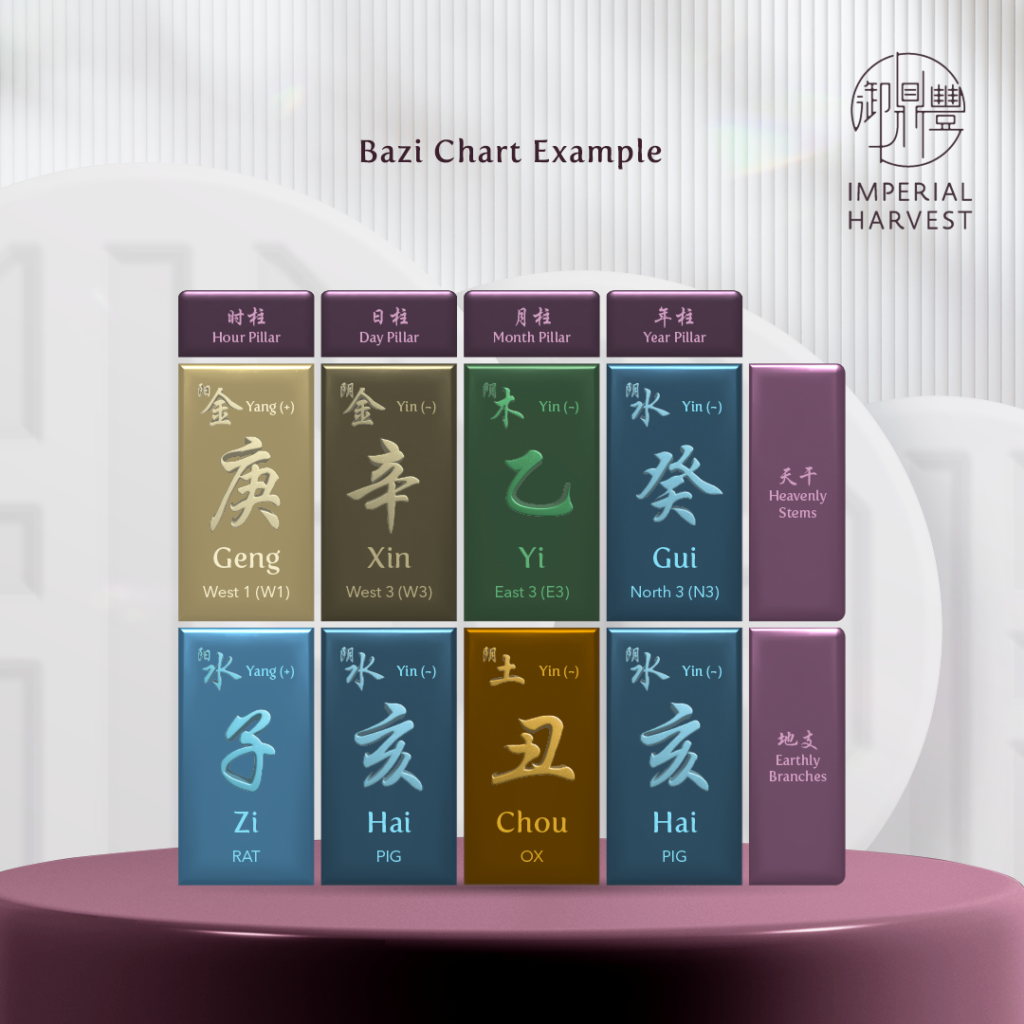
What is Bazi used for?
Bazi (八字) reading provides valuable insights into an individual’s life path, strengths, weaknesses, opportunities, personality, and relationship dynamics. It serves a variety of purposes, including:
- Personality Analysis: Gaining a deeper understanding of one’s inherent traits and behaviours.
- Career Guidance: Identifying professions that align with an individual’s elemental strengths.
- Relationship Compatibility: Evaluating the harmony and compatibility between individuals.
- Health Insights: Recognising potential health issues that may arise from elemental imbalances.
How Do You Read a Bazi Chart?
In Bazi (八字), the Chart Structure or 格局 (gé jú) is a critical concept that represents the structure, framework, or configuration of a Bazi chart. It serves as the foundation for understanding the overall dynamics and interactions within the chart. Determining the Chart Structure involves identifying the primary element and its relationships within the Ten Heavenly Stems and Twelve Earthly Branches.
Understanding Chart Structure (格局)
1. Definition:
- 格 (gé): Refers to the “type” or “classification” of the chart based on the dominant element or structure.
- 局 (jú): Indicates the “setup” or “framework” formed by the relationships among the elements in the chart.
Chart Structure reflects the core characteristics and tendencies of an individual’s destiny, such as strengths, weaknesses, and the overarching theme of their life.
2. How Chart Structure is Determined:
The Chart Structure is determined by analysing the following aspects of the chart:
- Day Master (日主): The Heavenly Stem of the Day Pillar, representing the individual’s core self.
- Five Elements (五行): Wood, Fire, Earth, Metal, and Water, and their balance or dominance within the chart.
- Seasonal Influence: The season is represented by the Month Pillar, which significantly impacts the chart’s energy.
- Favourable and Unfavorable Elements: The interaction and strength of each element in relation to the Day Master.
3. Types of Chart Structure:
Bazi charts are broadly classified into several Chart Structures, which provide insights into the individual’s path and potential. The main categories are:
Normal Chart Structure (正格局):
These charts follow conventional structures, focusing on balancing the Day Master using supporting (favourable) or restraining (unfavourable) elements. Examples include:
- 正官格 (zhèng guān gé): Dominated by the “Proper Authority” (正官).
- 偏官格 (piān guān gé): Dominated by the “Unorthodox Authority” (偏官 or 七杀).
- 正印格 (zhèng yìn gé): Focused on the “Proper Seal” (正印).
- 食神格 (shí shén gé): Dominated by the “Eating God” (食神).
Special Chart Structure (特殊格局):
These charts exhibit unusual structures due to extreme elemental dominance or unique configurations. Examples include:
- 从格 (cóng gé): A “Follower” structure, where the Day Master is weak and follows the dominant element.
- 化格 (huà gé): A “Transformation” structure, where a particular combination transforms elements into another.
- 七杀格 (qī shā gé): A “Seven Killing” structure focused on harnessing unconventional authority.
4. Purpose of Identifying:
Understanding the Chart Structure allows the practitioner to:
- Identify the Individual’s Core Attributes: The dominant traits, personality, and life tendencies.
- Analyse Strength and Weakness: The balance of elements and how they support or challenge the Day Master.
- Determine Favorable and Unfavorable Elements (用神 and 忌神): The elements that bring harmony or imbalance to the chart.
- Provide Guidance: Recommend suitable careers, relationships, and lifestyle choices aligned with the individual’s destiny.
5. Common Challenges in Determining:
- Complexity of Element Interactions: Charts with mixed dominance can be difficult to classify into a single Chart Structure 格局.
- Weak vs Strong Day Master: Determining the strength of the Day Master is a prerequisite for proper analysis.
- Seasonal Impact: The influence of the month branch can significantly alter the balance of elements.
In summary, Chart Structure is a cornerstone of Bazi analysis, shaping the narrative of the chart and serving as the key to unlocking deeper insights into an individual’s destiny and potential. It requires a comprehensive understanding of elemental interactions, chart strength, and specific configurations to effectively guide the individual.
How to Determine if Your Bazi is Strong?
In classical Bazi analysis, a common approach involves evaluating the strength of the Day Master (日主). This method focuses primarily on determining whether the Day Master is “strong” or “weak” and then identifying the 用神 (yòng shén) — the favourable element that brings balance to the chart—based on this evaluation. This process, while traditional, is often myopic as it relies heavily on a single technique known as Strength Evaluation 强弱/扶抑 (qiáng ruò/fú yì).
However, Imperial Bazi Analysis transcends this simplistic approach by utilising four major techniques to identify the favourable element, offering a more sophisticated and holistic understanding of the chart’s dynamics. These techniques include:
1. Seasonal Adjustment (调候)
This technique explores the influence of the season, represented by the Month Pillar, on the chart. The seasonal energy directly impacts the Day Master’s strength and elemental balance. For instance, winter enhances Water energy while weakening Fire energy.
By identifying the seasonal energy, this method allows for adjustments that regulate and harmonise the flow of energy within the chart. These adjustments ensure that the elemental forces are balanced, leading to a prosperous and harmonious outcome.
2. Strength Evaluation (扶抑)
This method assesses whether the Day Master is “strong” or “weak” and identifies elements that either support (扶) or restrain (抑) it. Although this evaluation is a common practice in classical Bazi, Imperial Bazi incorporates it as one of several techniques, rather than relying solely on it to determine the chart’s favourable element.
3. Energy Bridging (通关)
This advanced technique identifies elements that act as a “bridge” to resolve conflicts or imbalances between opposing elements in the chart. For example, if there is a clash between Fire and Metal, Earth may be prescribed as the bridging element to harmonise their interaction. Energy Bridging helps ensure a smoother energy flow and alleviates tension within the chart, promoting balance and harmony.
4. Healing Prescription (病药)
In this technique, the chart is analysed as if it were a “patient,” with 病 (bìng) representing imbalances or “illnesses” in the chart, and 药 (yào) referring to the “medicine” or remedy that corrects these imbalances.
The goal is to identify the root cause of disharmony and prescribe the precise element needed to restore equilibrium. This method is particularly effective for charts that exhibit an extreme dominance or deficiency of a specific element.
Why Choose Imperial Bazi Analysis?
Imperial Bazi’s multi-faceted approach delivers deeper insights and actionable guidance by addressing the chart’s complexities through these four sophisticated techniques. This comprehensive methodology allows practitioners to identify the Favourable Element (用神) with unparalleled accuracy, empowering clients to make informed decisions and unlock their true potential.
By moving beyond the limitations of classical Bazi, Imperial Bazi provides a refined and personalised framework for achieving balance, harmony, and success.
The Foundation of a Bazi Chart
To understand the various components of a Bazi chart, it’s essential first to comprehend the core concept of Yin and Yang: the cosmic dualities that influence all aspects of Chinese philosophy.
In Bazi reading, each chart consists of the 10 Heavenly Stems (天干) and the 12 Earthly Branches (地支), each of which is associated with the Five Elements and has its own Yin and Yang polarities. The chart is divided into four pillars: Year, Month, Day, and Hour, each representing different stages of a person’s life— foundational, adolescent, adult, and senior years, respectively.
In addition, a Bazi chart can be used to explore relationship dynamics. The Year pillar represents grandparents, the Month pillar reflects parents, the Day pillar signifies oneself and their partner, and the Hour pillar denotes children. It can also be used to assess potential health concerns. The Year pillar is linked to the head and neck, the Month pillar covers the chest and upper torso, the Day pillar relates to the abdomen and digestive system, and the Hour pillar is associated with the lower limbs.
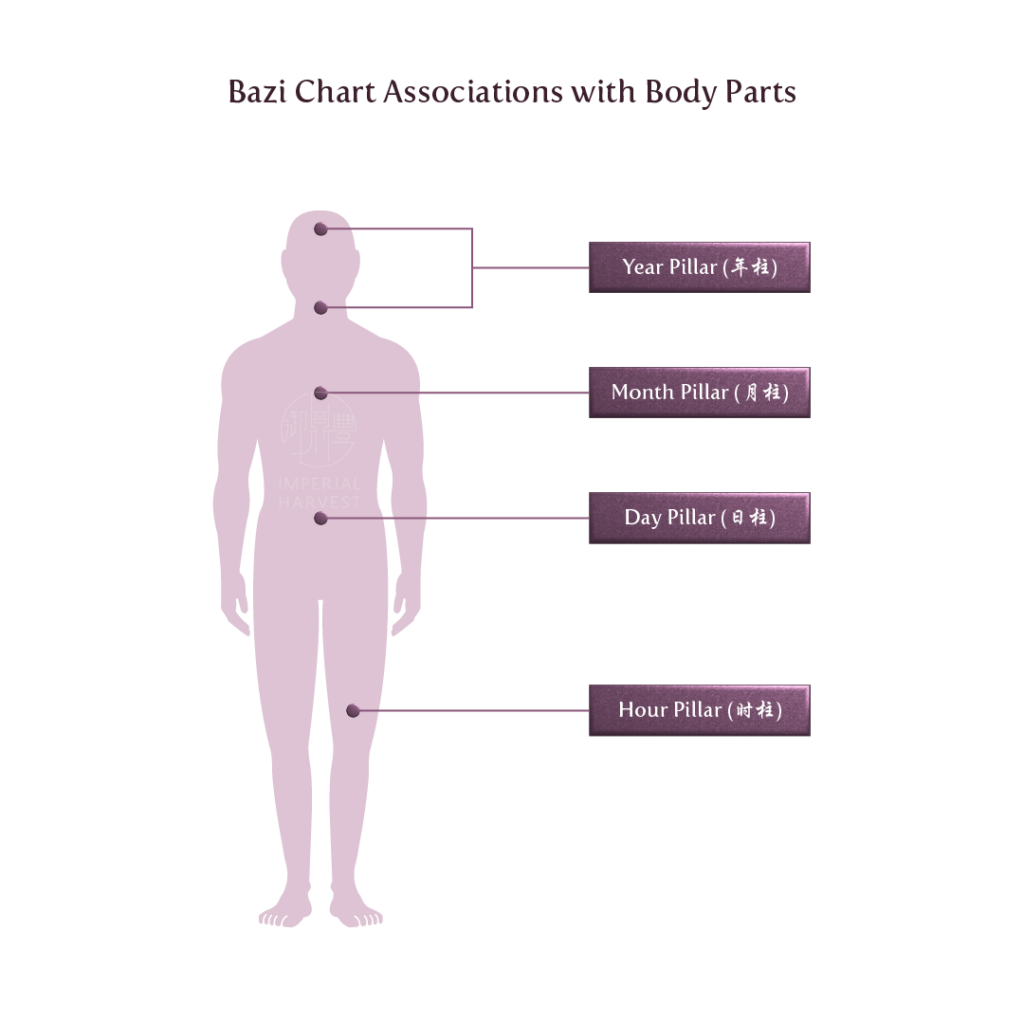
Furthermore, one can identify upcoming opportunities and potential threats by examining the interactions of elements within the Bazi chart, along with the 10-year luck pillar and the annual, monthly, daily, and bi-hourly luck pillars.
What is the Structure of a Bazi Chart?
Heavenly Stems (天干)
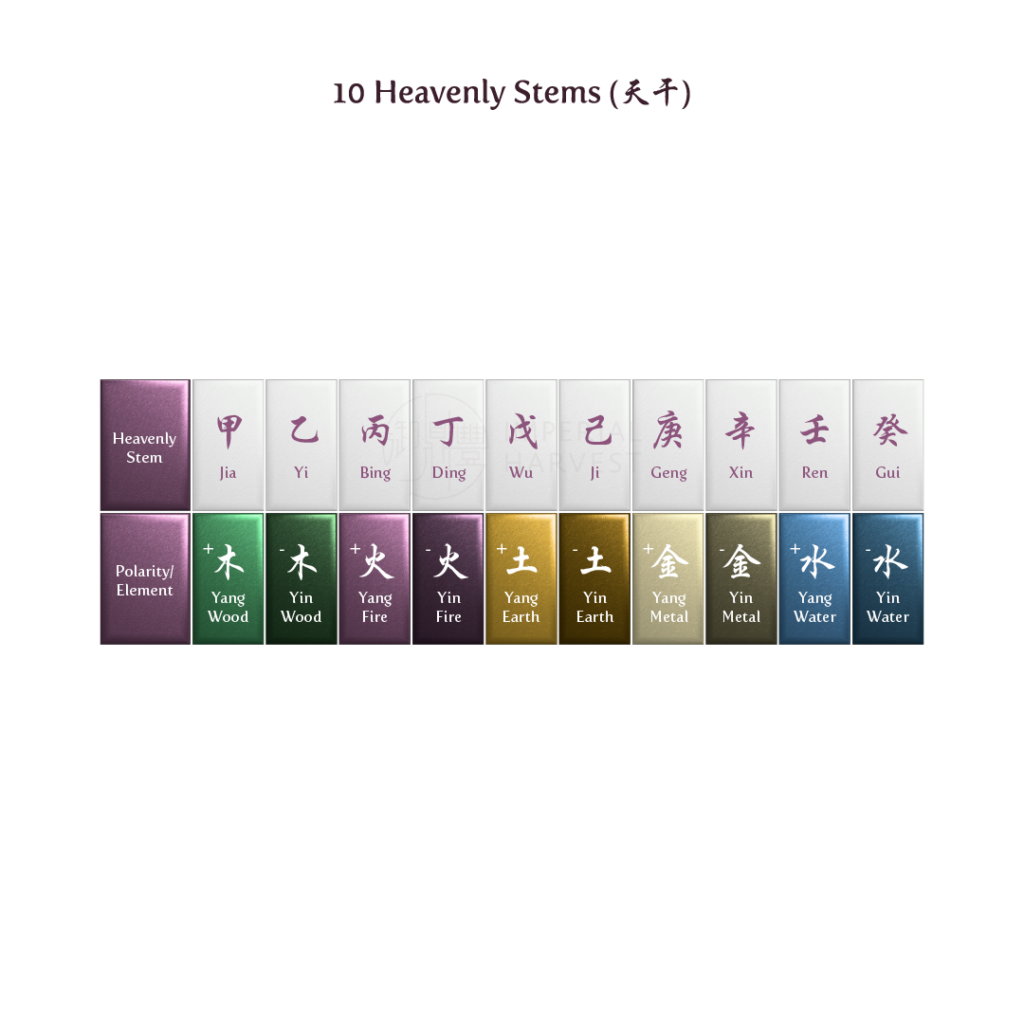
In Bazi, the ten Heavenly Stems are linked to elemental attributes and Yin-Yang polarities. These include Jia Wood (甲木), Yi Wood (乙木), Bing Fire (丙火), Ding Fire (丁火), Wu Earth (戊土), Ji Earth (己土), Geng Metal (庚金), Xin Metal (辛金), Ren Water (壬水), and Gui Water (癸水).
For beginners, the Day Stem, also known as the Daymaster, serves as the reference point in a Bazi chart for evaluating elemental interactions.
The Month Pillar dictates the seasonal influences—temperature and humidity—of the chart. Practitioners use methods like the temperature adjustment technique (调候法) to identify favourable elements, which is central to Bazi analysis. Other methods, such as evaluating the Daymaster’s strength (扶抑法), sickness and cure (病药法), and bridging (通关法), are used to identify favourable elements as well.
The Heavenly Stems of a Bazi chart corresponds to the Ten Gods, which represent different aspects of a person’s life and destiny, such as career progressions, relationship changes, and health.
Earthly Branches (地支)
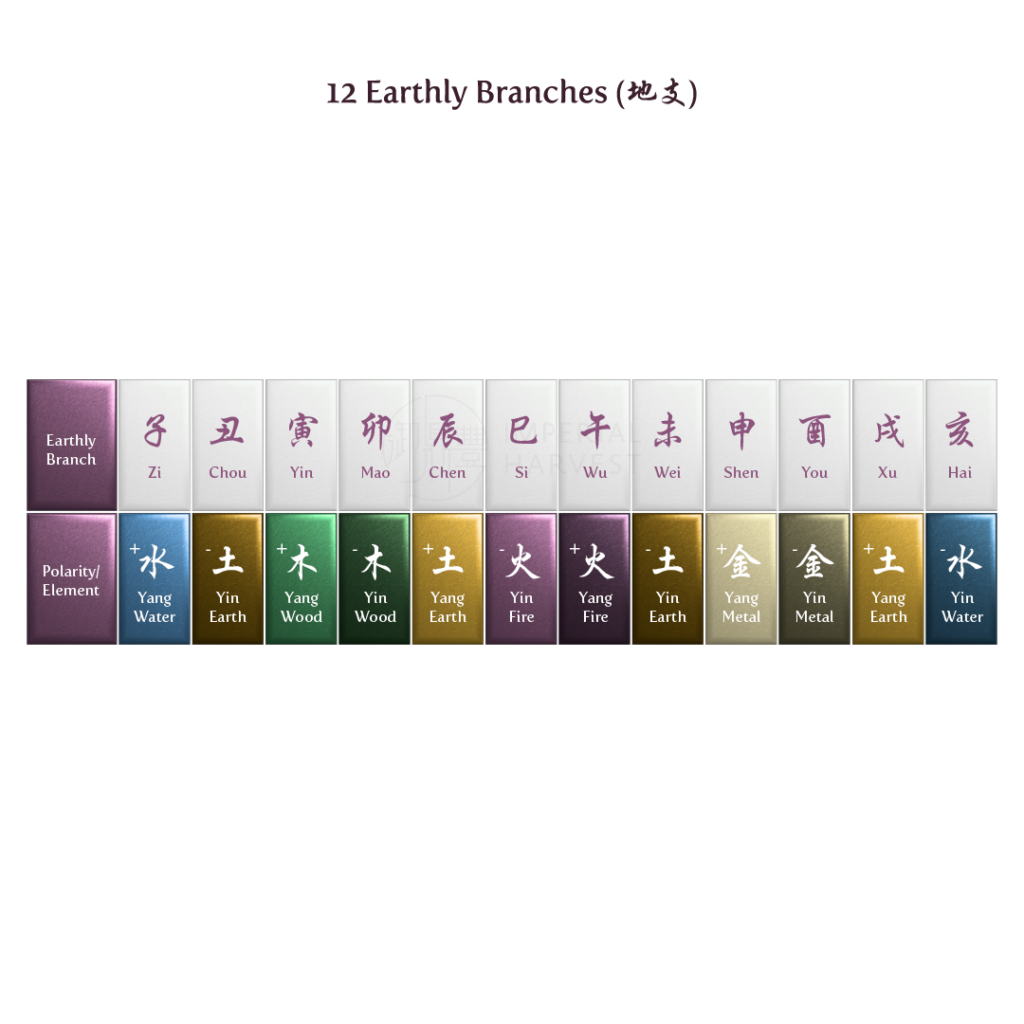
The 12 Earthly Branches are intricately tied to Jupiter’s 12-year orbital cycle. Each branch corresponds to a specific year in this cycle and is also used to divide time within the year, such as by year, month, day, and two-hour periods. The branches include Zi (子), Chou (丑), Yin (寅), Mao (卯), Chen (辰), Si (巳), Wu (午), Wei (未), Shen (申), You (酉), Xu (戌), and Hai (亥).
In ancient Bazi, the 12 Earthly Branches were paired with the 10 Heavenly Stems to form the 60 Jia Zi cycle, where Yang Heavenly Stems align with Yang Earthly Branches, and Yin Heavenly Stems align with Yin Earthly Branches. This system plays a key role in timekeeping and influences various life aspects.
Each Earthly Branch contains hidden Heavenly Stems, which Bazi practitioners analyze to understand interactions like clash, punishment, and combination, providing insight into relationship dynamics, opportunities, and challenges.
Year Pillar (年柱)
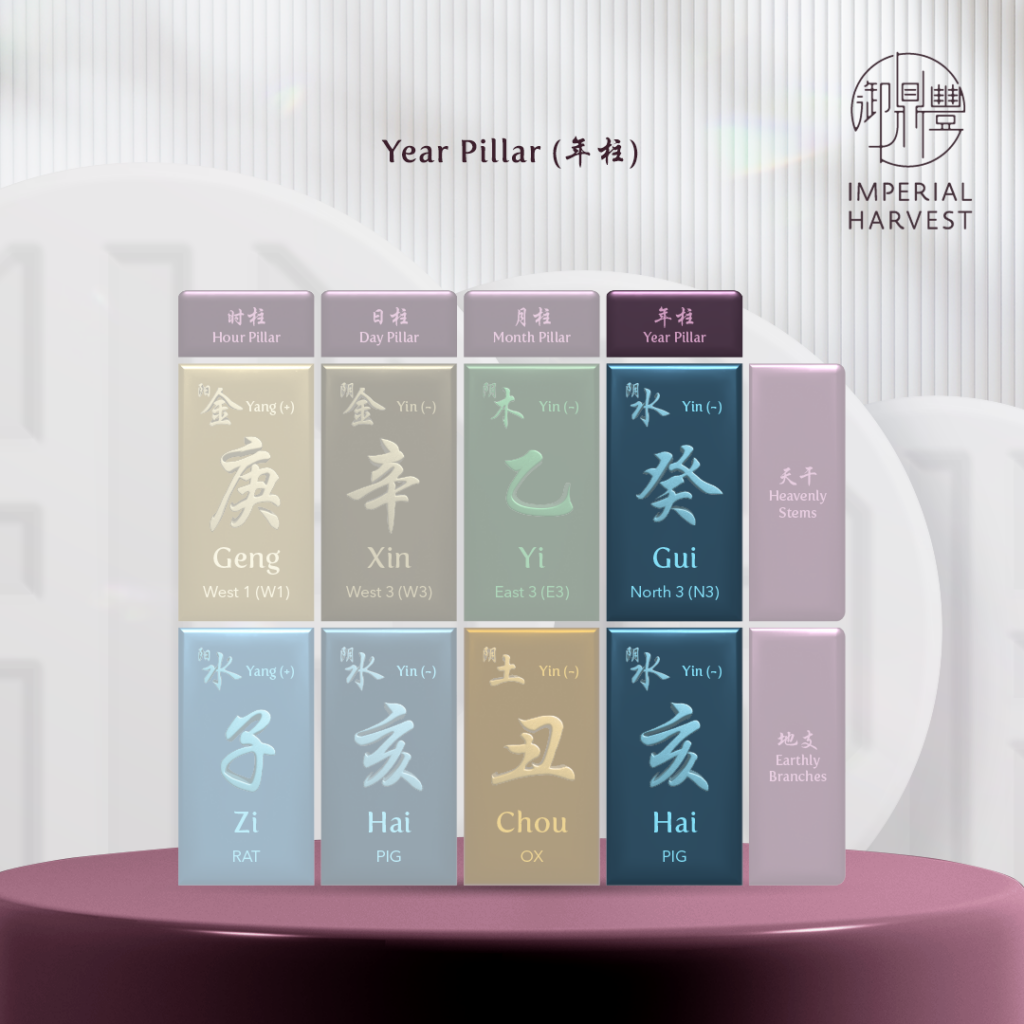
The Year Pillar is derived from the birth year and represents one’s ancestors, grandparents, and external environment. Changes in the Year Pillar, particularly clashes, indicate major life shifts. The Ten Gods’ interactions with this pillar can help identify specific areas of change.
At a basic level, the Year Pillar helps assess compatibility between partners or business associates, using methods like the Three Harmony and Three Seasonal combinations. At a more advanced level, it is used to assess life goals and values alignment in relationships.
The Year Pillar’s comparison with the Ten-Year Luck Pillar can reveal career changes, such as moving abroad or transitioning into one’s profession. When compared to the Month Pillar, it can shed light on how one’s family influences their formative years. The Year Pillar can also indicate health concerns related to the head, neck, and mental well-being.
Month Pillar (月柱)
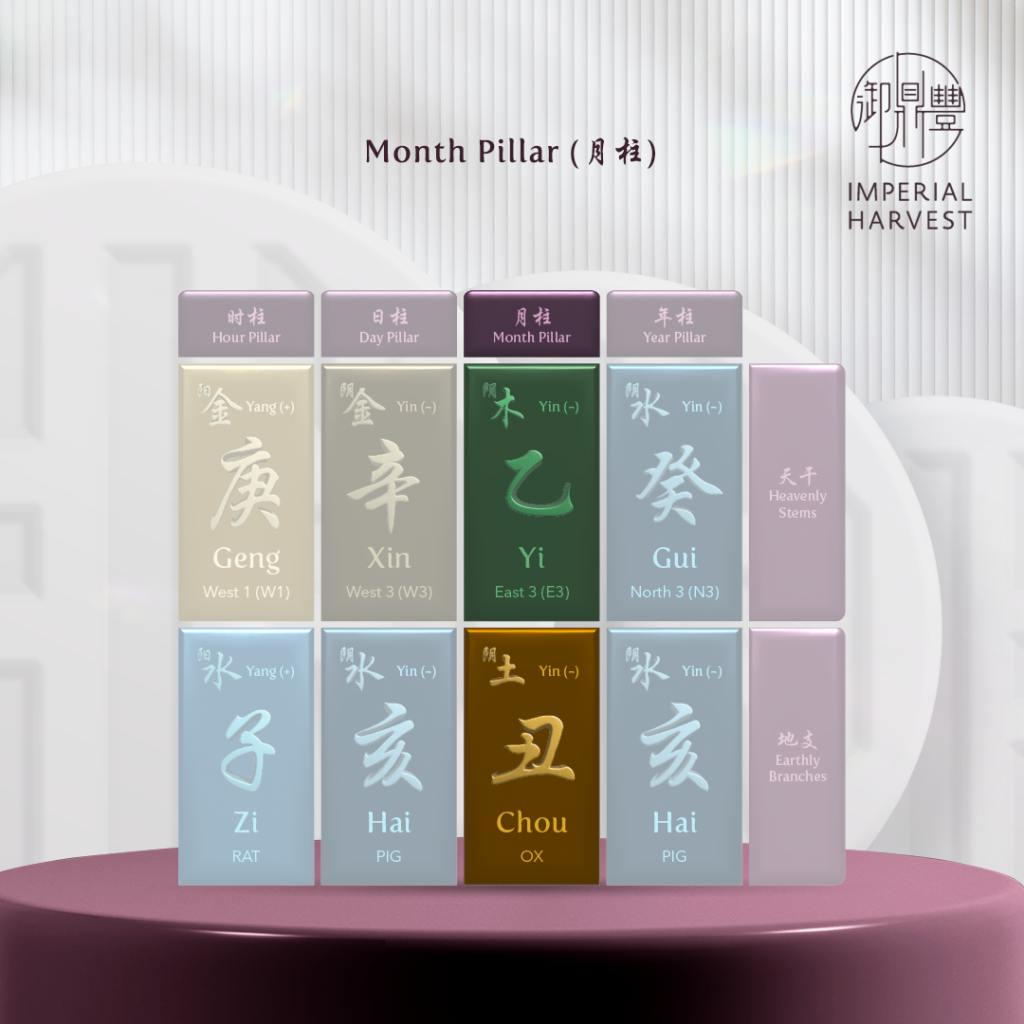
The Month Pillar governs the seasonality of a Bazi chart, affecting temperature and humidity. It plays a key role in identifying favourable elements that lead to benefactors, wealth, and opportunities, while unfavourable elements bring challenges.
This pillar is important for assessing career changes, business dynamics, and family health. When combined with the Hour Pillar, it helps evaluate career prospects, relationships with superiors, and business status. For business owners, the Month Pillar represents business conditions and partnerships.
Day Pillar (日柱)
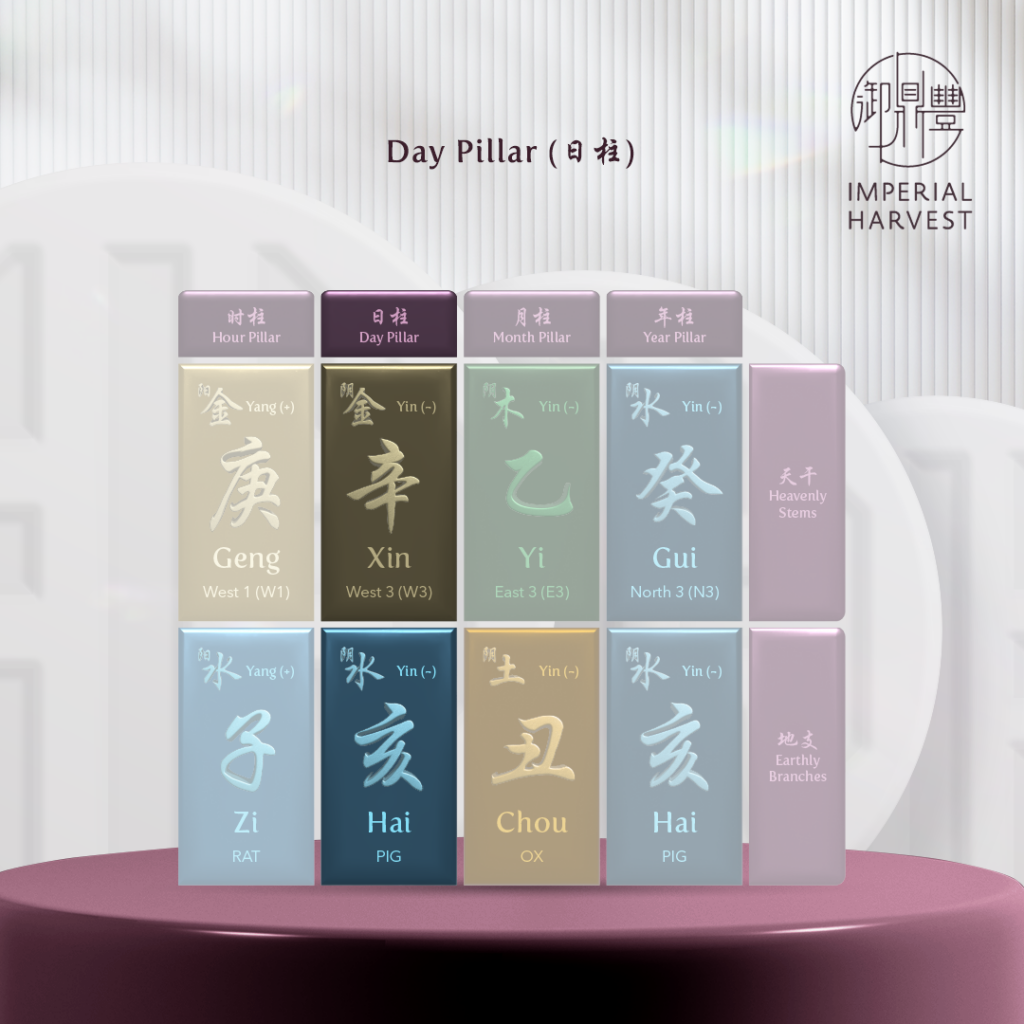
The Day Pillar represents the individual’s core self. It is key for understanding personality traits like creativity, responsibility, sociability, empathy, and emotional stability. By analyzing the Day Master, practitioners gain insights into how these qualities manifest in a person’s life.
For example, a Day Pillar of Geng Metal and Shen Monkey (庚申) reflects a personality that is pragmatic, analytical, and resilient, with a strong sense of duty and ambition. This in-depth analysis provides a clear picture of one’s traits and potential.
Hour Pillar (时柱)
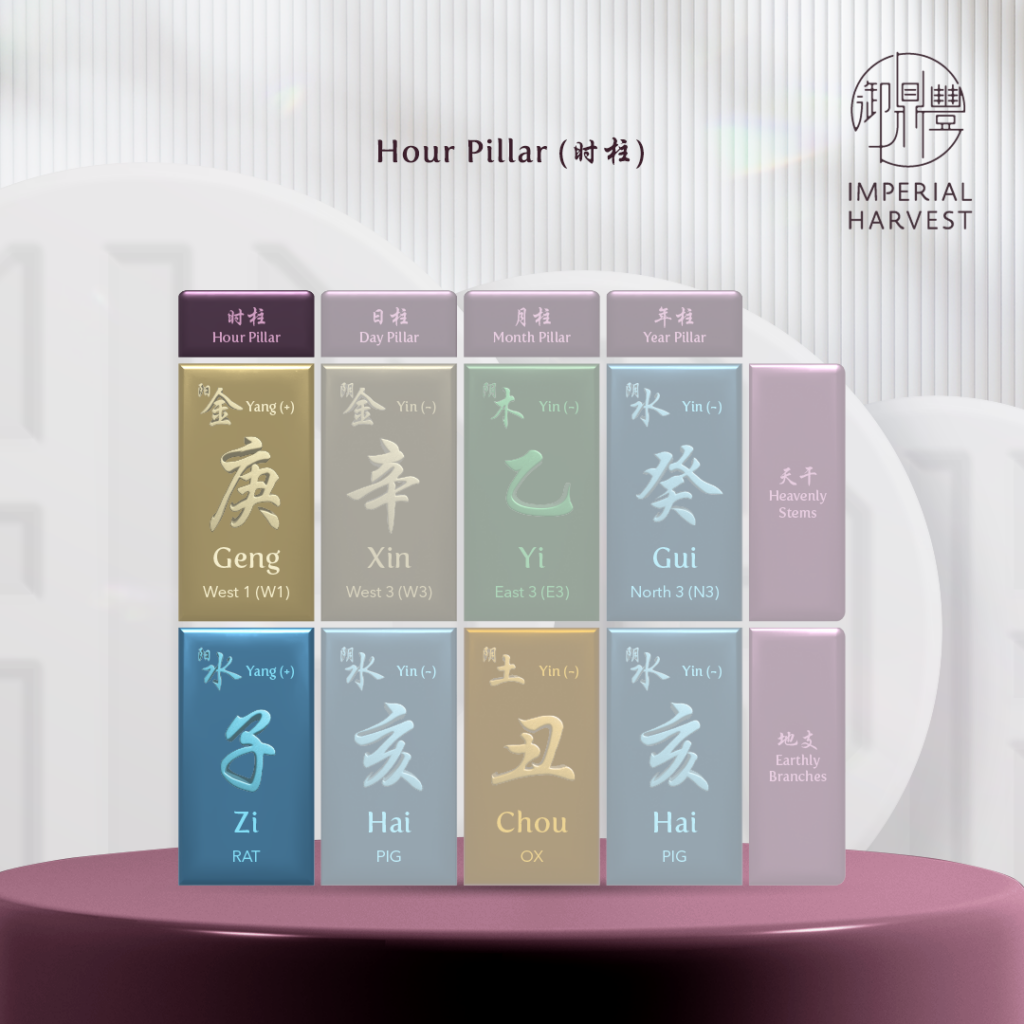
The Hour Pillar represents one’s children, subordinates, and assets. It also influences the overall temperature and humidity of the chart, with the Month Pillar governing seasonal temperature and the Hour Pillar affecting daily temperature shifts.
In terms of investments, the Hour Pillar is important for assessing risk. When the stem of the Hour Pillar enters the graveyard, it signals a time to avoid high-risk financial decisions. For couples trying to conceive, the Hour Pillar can help determine the optimal timing for fertility treatments.
Major Flaws with Modern Bazi Charts
Modern Bazi charts are now based on standardised time zones, a shift made to accommodate the development of railways and telecommunications, making timekeeping more consistent. This marks a significant departure from the methods used by ancient Bazi astrologers.
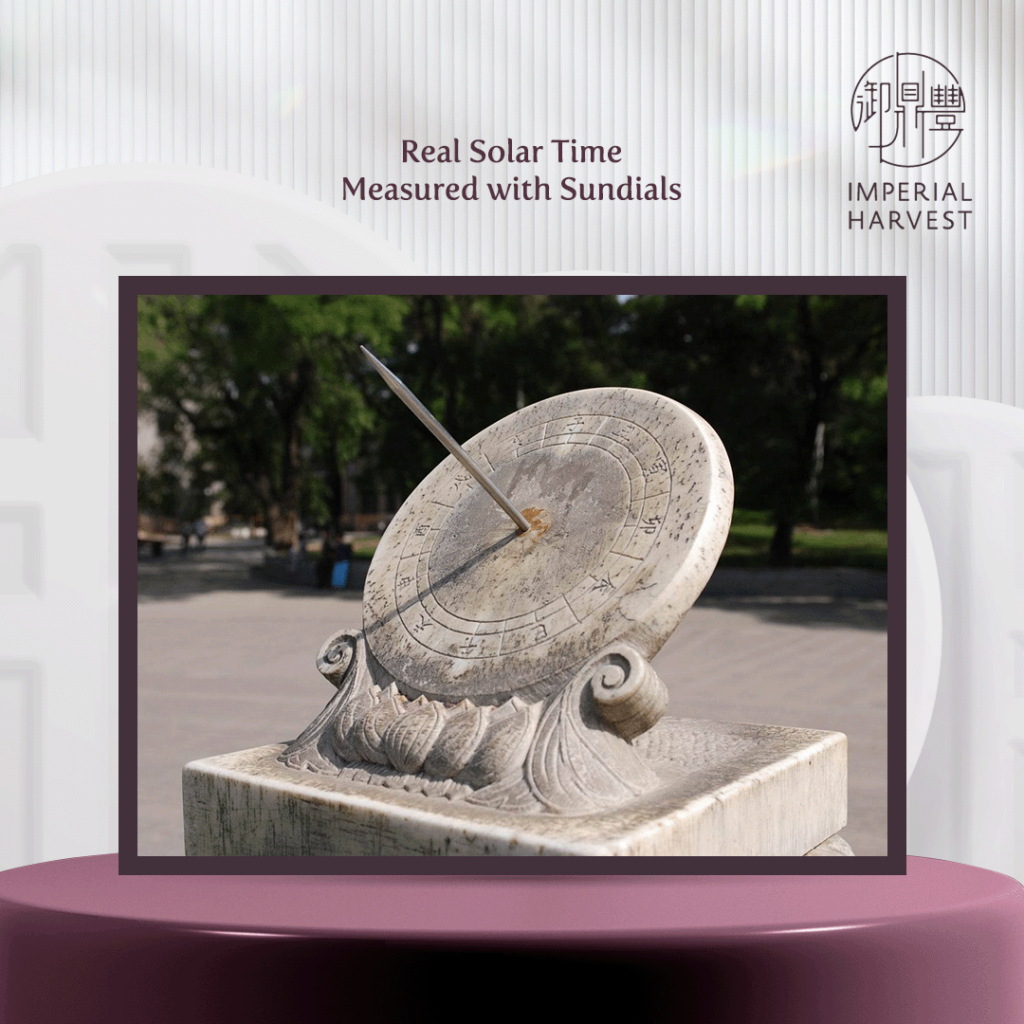
In contrast, ancient Bazi astrologers relied on real solar time, often measured using sundials, as it was the most natural and direct way to track the passage of time, based on the Sun’s position.
Bazi philosophy holds that an individual’s life path is influenced by the exact time their body is exposed to the Sun, making real solar time the authentic basis for creating a Bazi chart.
What is Real Solar Time?
Real solar time, or simply solar time, is a system of measuring time that is based on the Sun’s position in the sky. It is determined by observing the movement of the Sun across an observer’s local meridian.
Here’s how it works:
Solar Noon: Real solar time reaches noon (12:00) when the Sun is at its highest point in the sky, directly above the local meridian of a specific location.
Variation: Real solar time changes with longitude, as it depends on the Sun’s position relative to a location’s local meridian (an imaginary line running from the North to the South Pole). Each degree of longitude corresponds to a four-minute difference in solar time. For example:
- Moving eastward results in an earlier solar time. For every 15 degrees of longitude travelled east, solar noon occurs approximately one hour earlier.
- Moving westward delays solar time. Travelling 15 degrees west means solar noon occurs about one hour later.
Each location with a unique longitude has its own specific solar time, making it essential to know the exact time and city of birth when plotting a Bazi chart.
Discover the Power of Your Bazi with Imperial Harvest
What can I expect from a Bazi reading?
At Imperial Harvest, we focus on building a long-lasting relationship with our clients as they embark on a path to abundance and fulfilment under Master David’s expert guidance. Each Bazi reading at Imperial Harvest is thorough, detailed, and carefully crafted to offer valuable insights into various aspects of a client’s life.
How long is a Bazi reading consultation?
Your complimentary Bazi analysis and consultation will typically last around one hour. As a pioneer in providing free and comprehensive Bazi analysis in Singapore, Master David and his team conduct these sessions in a private consultation space, ensuring clients gain a deep understanding of their Bazi chart and are aligned with their goals and aspirations as they begin their journey with Imperial Harvest.
Where will the session be held?
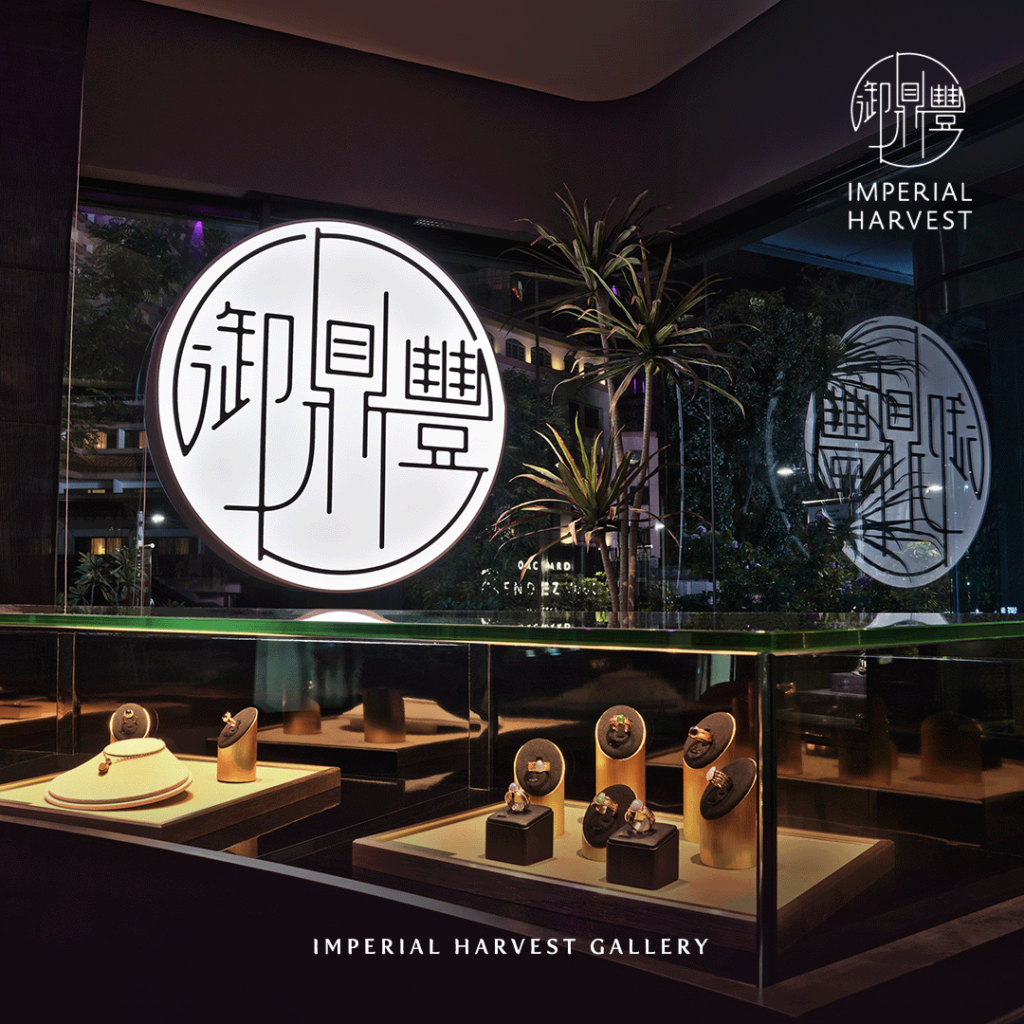
Bazi readings at Imperial Harvest are held in person at our Gallery.
n Bazi, there are 13 time periods (时辰) in a day, including the early and late rat hours. Given 365 days in a year, this results in 4,745 possible Bazi chart combinations annually. When gender is considered, there are 9,490 unique Bazi charts. With around 30,000 babies born annually in Singapore, there are at least three same-gender individuals born each year with the same Bazi chart and luck cycle. However, even with identical birth details, individuals have different life experiences due to unique elemental facial features and palm lines.
A Modern Pathway to Success
Bazi is a profound tool for understanding your life’s path, strengths, and potential. Whether you’re seeking clarity in your career, relationships, or health, a Bazi reading offers invaluable insights to guide you towards success. By understanding the elemental influences in your life, you can align your actions with the cosmic forces that shape your destiny.

Embark on Your Imperial Harvest Journey
At Imperial Harvest, Master David provides expert guidance to help you unlock the full potential of your Bazi chart. With tailored consultations, you can gain a deeper understanding of your life’s path and make empowered decisions that lead to abundance and fulfilment.
Imperial Harvest’s expert consultants are always on hand to guide you on your journey and provide you with insights to help you realise your fullest potential. Book a complimentary consultation today or contact us at +65 92301640.
We are located at
For prospective clients: Imperial Harvest402 Orchard Road
Delfi Orchard #02-07/08
Singapore 238876 For existing clients: Imperial Harvest Prestige
402 Orchard Road
Delfi Orchard #03-24/25
Singapore 238876
Most Read Articles
Get to read our life changing articles and get inspired.
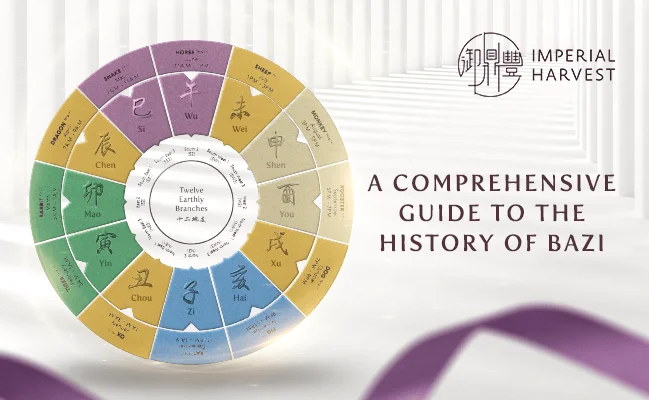
A Comprehensive Guide to the History of Bazi (八字)
Estimated Reading Time: 5 mins Bazi (八字) is often mistakenly assumed as the Chinese counterpart of western Astrology. The similarities between both systems lie in their utilisation of birth dates and time in their calculations, and the ability to be read from a tabulated chart. Where Astrology may take into account the positions of different […]

Imperial Harvest Consecration Ceremony
Estimated Reading Time: 5 mins At Imperial Harvest, each earthly treasure undergoes a series of consecration rites performed by Master David, before it is bestowed upon its blessed owner. Every aspect of these sacred Chinese anointing rituals is carefully examined and accurately represented in Master David’s blessings, reflecting Imperial Harvest’s deep respect for these esteemed […]
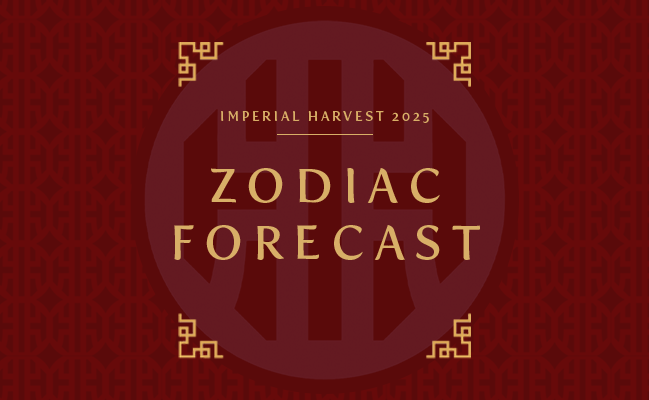
Imperial Harvest 2025 Zodiac Forecast
Estimated Reading Time: 7 mins The Year of the Wood Snake in 2025 brings a dynamic period of growth, transformation, and new beginnings. With its ambitious qualities, the Wood Snake’s influence offers unique opportunities for those who seek progress and renewal. Drawing from the time-honoured principles of Imperial Feng Shui, the Imperial Harvest 2025 Zodiac […]
